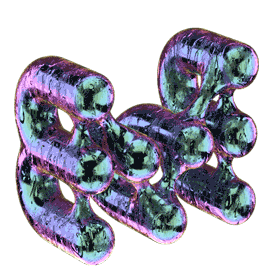

















Jindřich’s Model # 4: Michal Nesázal
In the year 1992 Michal Nesázal became the third recipient of the Jindřich Chalupecký Award after Vladimír Kokoliov and František Skála. His laureate exhibition in the Václav Špála Gallery was, for its time and local context, very progressive. The exhibition included an interactive installation that invited viewers and coincidental passerby on Národní třída to, through the otherwise darkened window of the gallery, meet with their own image on a television screen. This image was simultaneously watched by a stuffed wolf. Other elements, such as a motorcycle, gorilla paws or photographs of animals in contrast with luxurious chandeliers circulated around the topic of living in reality and its (inanimate) image or reflection. At the same time, these elements did not neglect the engaged subtext. Perhaps the only “classic” part of the exhibition were the drawings of the three-legged dog Taco, who had become Nesázal’s companion and perhaps a somewhat spiritual guide during his stay in Australia.
As part of the exhibition series Jindřich’s Model, Nesázal reconstructed part of this original installation while choosing a much more minimalistic form of expression- drawings guided by a look into the quantified world and the difficult to describe layer of reality which the artist creates on a daily basis.
Michal Nesázal (*1963) finished his studies in 1991 at the Academy of Fine Arts under the guidance of Jiří Sopka. He studied abroad at the University of Western Sydney, the Headland Center for the Arts in San Francisco, in Hong Kong, Shanghai and was a part of a residency program in New York and Vermont. He creates precise painted canvases depicting dreamy landscapes and characters which mature from neat, naive expressions into disturbing ones pushing the boundaries of genre. This creates a kind of insight into other worlds full of mysterious and magical figures and landscapes. He treats his objects as small intimate worlds. In his installations he creates similar environments using the space of the entire gallery. He works with found materials, trinkets, toys, stuffed animals and various historical designs. He was also a member of the art group Pondělí, which brought new conceptual and personal techniques to the art scene in the 1990’s following the postmodern work of the Tvrdohlaví generation.



